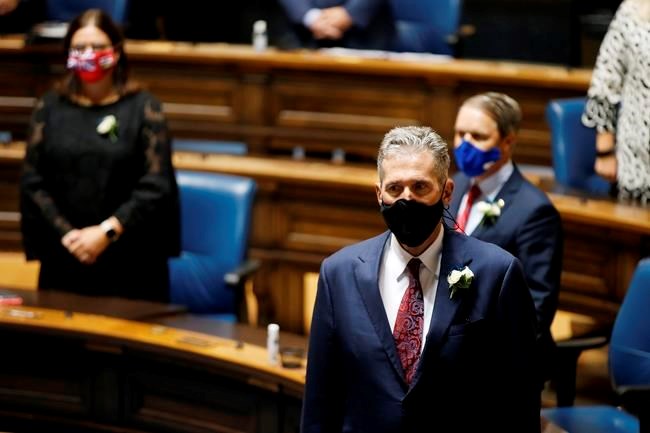WINNIPEG — Manitoba was a beacon of hope when the first wave of COVID-19 hit Canada.
The province had some of the lowest infection rates in the country and went weeks in the summer with no new cases.
But with a daily high of 480 new infections just over a week ago, some experts say the province quickly turned into an example of what can happen when people let their guard down.
“It really is to me this cautionary tale of COVID,” said Jason Kindrachuk, a research chair in emerging viruses at the University of Manitoba.
The outlook was so positive in the summer that the province started an advertising campaign promoting the restart of the economy. It wasn't until Aug. 25 that Manitoba surpassed 1,000 cases. At that time, 13 people had died from the illness.
Fast forward to this week. Between Monday and Friday, there were 1,144 new cases and 16 deaths. As of Friday, Manitoba continued to have the highest per-capita active case rate in the country.
"Perhaps we were cursed by our early success,” Premier Brian Pallister mulled during a news conference as the province tightened restrictions to stop surging infection numbers
Kindrachuk, in a phone interview from Saskatoon, emphasized that health professionals and scientists still don’t really understand the virus.
The drastic change in Manitoba, he said, is likely to have been born of a combination of factors.
The province took quick precautions in the spring by closing schools and businesses. The COVID-19 fire didn't gain much oxygen, Kindrachuk said, so there wasn’t much initial spread.
The summer with little to no new cases left people a bit complacent, he said. Some had a sense that Manitoba had somehow managed to avoid the worst of the pandemic and it would remain that way.
Cases increased in the Prairie Mountain Health Region, south of Winnipeg, in late summer. That was largely linked to outbreaks at Hutterite colonies and a meat-processing plant, but those quickly came under control.
However, as it got colder in the fall, people began gathering more indoors and were “maybe a little less concerned about the virus,” said Kindrachuk. Such gatherings provided opportune conditions for the novel coronavirus to spread — and continue spreading almost uncontrolled.
By October, there were outbreaks in multiple care homes, in hospitals and on First Nations reserves. Daily numbers rose by the hundreds, largely in Winnipeg.
Health officials pointed to people with COVID-19 symptoms bar hopping, going to work and playing recreational sports. Multiple funerals were linked to the spread, as were Thanksgiving gatherings.
Winnipeg moved into the red zone on Manitoba’s pandemic response scale earlier this week. That forced the closure of restaurants and bars and limits the number of people in stores. The southern health region is to go red starting Monday.
The test positivity rate for Winnipeg has hovered near nine per cent for weeks. The World Health Organization says anything above five per cent requires restrictions because it means there is widespread community transmission.
While these levels have been seen in some localized communities in Quebec and Ontario, Kindrachuk said it's usually not across a very large city like Winnipeg.
Rates of hospitalization in Manitoba have also drastically increased and officials have said intensive care capacity lingered around 90 per cent or higher over the last week.
“Every indicator that we have to tell us that this is bad, is telling us this is bad,” Kindrachuk said.
Christopher Mody, head of immunology and infectious diseases at the University of Calgary's Cumming School of Medicine, said it’s also important to look at the “R-naught,” a measurement of the average number of secondary infections a COVID-19 positive person produces.
In Alberta, he says, it's at about 1.2. In Manitoba, it is between 1.86 and 2.5. This indicates the epidemic is growing at a fast pace.
“When you get to an R of two, it basically means the virus is going through the community unimpeded,” Mody said. “In other words, you really aren’t doing much to slow down the virus.”
However, Mody said Manitoba’s situation isn’t completely unique. Many European cities have had significant surges during the second wave.
Many experts now agree that restrictions can target specific places where spread is happening, rather than a full shutdown, he added.
If people act responsibly and the government targets places where spread is happening, Manitoba could get things under control, Mody said.
“What we need to do is somewhere between what we were doing a month or two ago and what we did in April."
This report by The Canadian Press was first published Nov. 7, 2020.
Kelly Geraldine Malone, The Canadian Press



